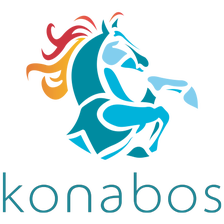Content Strategy for a Successful Xperience by Kentico Migration
Lukasz Skowroński - Senior Solutions Architect
16 Apr 2025
During the recent webinar on migrating to Xperience by Kentico with Sean G. Wright, we discussed the use of the migration tool and shared some experiences on the strategy you should follow to get the most out of the tool and simplify your migration process.
I thought it might be a good idea to shed some more light on the subject and expand the topic to include other considerations to keep in mind.
Simplicity versus reusability
These days content owners and business stake holders try to find a way to reduce costs of content creation and generate content quicker. At this point it is probably worth to suggest you checking Kentico’s AIRA (https://www.kentico.com/platforms/xperience-by-kentico/digital-marketing/aira).
Reusability is a key expectation, but it also has a specific that we can describe as a downfall in the context of content migration. Reusability leads to content being scattered into small pieces kept in a different locations and structures – very often with multiple relations between them. When you design a new system it sounds like a perfect trait of the content, but let’s try to think about it in the context of content migration from the other system that stores data in the content structures not optimized for reusability – for example all the content stored on the level of the page items.
If you decide to kill two birds with one stone and divide large content into smaller reusable pieces you may end up with significantly increased complexity of the setup of migration tool because first you have to extract data from the large item and then create multiple smaller items in a new structure of Xperience by Kentico – smaller items that also have relations between and require to be linked during the import.
As complexity increases, you need to calculate whether it still makes sense to spend additional time on configuration to gain reusable content. If you are planning to migrate hundreds or thousands of items, then increased complexity is not such a big deal; if you are planning to migrate dozens of items, I would recommend validating your strategy.
Content redundancy
It is somehow related to the previous point – when you migrate content from old system to Xperience by Kentico and you know that old system was not designed to reuse content across the pages, you can end up with similar state – so large content items not using shared data sources – or with multiple smaller potentially reusable content pieces that are basically or exactly the same. If you try to deal with content redundancy and duplication in general, you may have a huge challenge ahead of you.
Older systems that were not well designed and on top of that had issues with data duplication can almost guarantee that your data import process will end up with data duplicated also in the new system. You can try to implement comparison mechanisms as a part of the migration tool, but results will be only as good as the content you have at the input.
Imagine multiple typos, different spacing or html code in the content - you can try to clean things up a bit, but the chances of getting a perfect data set at the end are almost equal to zero.
With this in mind, you must be prepared to do some manual work at the end, removing redundant content and replacing references to the correct data sources. It also means that you need to reassess whether the size of the data set justifies the effort of your development team to prepare algorithms that reduce the amount of manual work at the end.
With dozens of items, it is probably not worth it, with thousands it makes sense, with hundreds it probably depends on the quality and structure of your content.
Content structure
The final point is a content structure that can make your migration a challenge or as easy as a Sunday walk in the park. Xperience by Kentico can keep content in multiple different structures that vary depends on the part of the system (Content Tree, Page Builder, Content Hub).
If you decide to recreate the content tree with the data from the old system, you need to remember all the relationships and then the content within those tree elements.
If you decide to re-create content and make it editable in Page Builder, you must be prepared to convert the content structure to the JSON format used by that tool and save it in the context of the content tree items.
If you choose to use the Content Hub, your life will be easier, but you may still need to consider updating other elements that use content from the Content Hub.
Keeping your data in Content Hub is probably the easiest way to import your data into Xperience by Kentico, but you need to ask yourself if it works well with other requirements you have.
I hope that thanks to all the arguments mentioned in this article, you will now be able to plan your migration better. There are great tools provided by Kentico that can speed up your migration, but you have to make the right choices to be happy with the results. You must also not be afraid of manual work, which in my experience is always part of the process.
Think about the scale and complexity before you start acting and I am sure you will be able to call your migration process as a successful one.

Lukasz Skowroński
For over 18 years, I have developed numerous solutions for customers worldwide. I specialize in DXP platforms, including Sitecore, Xperience by Kentico, and various CMSs such as Umbraco. So far, I have been awarded nine times with the Sitecore MVP title, once with the Kentico MVP. I continuously support various communities by organizing local user groups and larger conferences like Sitecore User Group Conference Europe (SUGCON Europe), as well as by sharing knowledge through blog posts.



Share on social media